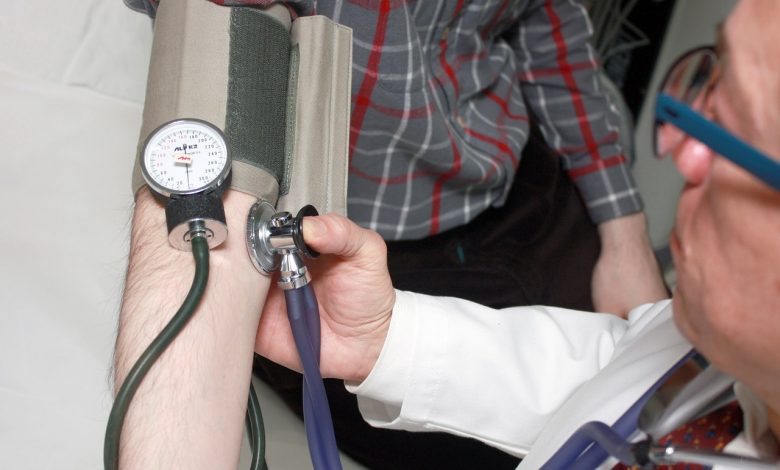12 Signs You May Have Metabolic Syndrome (Syndrome X)

What is metabolic syndrome?
Metabolic syndrome is a cluster of metabolic abnormalities that occur together and increase the risk of developing cardiovascular disease, type 2 diabetes, and other health conditions. The concept of metabolic syndrome has evolved over time as researchers have recognized the link between various metabolic risk factors.
The history of metabolic syndrome dates back to the early 20th century when researchers began to observe associations between certain health conditions. In the 1920s, French physician Jean Vague observed that individuals with a specific body shape, characterized by excess abdominal fat, were more prone to developing cardiovascular disease, diabetes, and hypertension. This observation laid the foundation for understanding the link between obesity and metabolic health.
In the 1980s, researchers began to identify a clustering of metabolic risk factors and coined the term “Syndrome X” to describe the condition. However, the exact criteria for diagnosing Syndrome X varied among different studies.
In the late 1990s, various organizations and expert panels, including the World Health Organization (WHO) and the National Cholesterol Education Program (NCEP), proposed diagnostic criteria for metabolic syndrome. These criteria aimed to standardize the diagnosis and facilitate research and clinical management. The NCEP Adult Treatment Panel III (ATP III) criteria, published in 2001, and the revised criteria by the International Diabetes Federation (IDF) in 2005 and 2009, became widely accepted and used.
The diagnostic criteria for metabolic syndrome have continued to evolve, with ongoing discussions among experts and organizations. For example, the American Heart Association and the National Heart, Lung, and Blood Institute introduced updated criteria in 2009, incorporating the measurement of waist circumference as a central obesity indicator.
The specific criteria for diagnosing metabolic syndrome have slightly differed among different organizations and guidelines. However, they typically involve the presence of at least three of the following components: abdominal obesity, high blood pressure, high fasting blood sugar levels, high triglyceride levels, and low HDL cholesterol levels.
Over the years, research has deepened our understanding of metabolic syndrome and its underlying mechanisms. It is now recognized as a complex condition involving various factors such as insulin resistance, chronic inflammation, hormonal imbalances, and genetic predisposition. Lifestyle modifications, including weight loss, healthy eating, and regular physical activity, are the primary strategies for managing metabolic syndrome. In some cases, medication may be prescribed to address specific risk factors.
As research continues to advance, efforts are being made to refine the diagnostic criteria, improve prevention strategies, and develop targeted interventions to reduce the impact of metabolic syndrome on public health.
Signs That Indicate You may have Metabolic Syndrome
Metabolic syndrome is a condition characterized by a cluster of metabolic abnormalities that increase the risk of cardiovascular disease, type 2 diabetes, and other health complications. Here are 12 vital signs that may indicate the presence of metabolic syndrome:
1. Abdominal obesity: Excess fat accumulation around the waistline is a key characteristic of metabolic syndrome. This is often measured by waist circumference, with a waist circumference of 40 inches (102 cm) or more in men and 35 inches (88 cm) or more in women being indicative of abdominal obesity.
2. High blood pressure: Metabolic syndrome is often associated with hypertension. Blood pressure readings consistently equal to or exceeding 130/85 mmHg are considered elevated and contribute to the diagnosis of metabolic syndrome.
3. High fasting blood sugar: Elevated fasting blood glucose levels equal to or exceeding 100 mg/dL indicate impaired glucose tolerance or insulin resistance. This is often an early indication of metabolic syndrome and can progress to type 2 diabetes if left unmanaged.
4. High triglyceride levels: Triglycerides are a type of fat found in the blood. Levels equal to or exceeding 150 mg/dL are considered elevated and are associated with an increased risk of cardiovascular disease. High triglyceride levels are commonly seen in metabolic syndrome.
5. Low HDL cholesterol levels: HDL cholesterol is often referred to as “good” cholesterol as it helps remove excess cholesterol from the bloodstream. In men, HDL cholesterol levels below 40 mg/dL, and in women, levels below 50 mg/dL, are considered low. Low HDL cholesterol is a characteristic feature of metabolic syndrome.
6. Insulin resistance: Insulin resistance occurs when the body’s cells become less responsive to the effects of insulin, a hormone responsible for regulating blood sugar levels. Insulin resistance is a key underlying factor in metabolic syndrome and often leads to elevated blood sugar levels.
7. Increased waist circumference: A waist circumference of 40 inches (102 cm) or more in men and 35 inches (88 cm) or more in women indicates abdominal obesity and is one of the central criteria for diagnosing metabolic syndrome.
8. Prediabetes: Prediabetes refers to blood sugar levels that are higher than normal but not yet in the diabetic range. It is often characterized by impaired fasting glucose or impaired glucose tolerance and is commonly associated with metabolic syndrome.
9. Family history: A family history of metabolic syndrome, type 2 diabetes, or cardiovascular disease increases an individual’s risk of developing metabolic syndrome. Genetic factors play a role in the predisposition to metabolic abnormalities.
10. Sedentary lifestyle: Lack of regular physical activity or a predominantly sedentary lifestyle is associated with an increased risk of metabolic syndrome. Engaging in regular exercise helps improve insulin sensitivity and metabolic health.
11. Polycystic ovary syndrome (PCOS): PCOS is a hormonal disorder that affects women and is characterized by enlarged ovaries with small cysts. Women with PCOS have a higher likelihood of developing metabolic syndrome due to insulin resistance and hormonal imbalances.
12. Inflammation: Elevated levels of inflammation markers, such as C-reactive protein (CRP), are often observed in individuals with metabolic syndrome. Chronic low-grade inflammation plays a role in the development and progression of metabolic abnormalities.
It’s important to note that the presence of these signs does not definitively diagnose metabolic syndrome. A healthcare professional should evaluate an individual’s overall health, conduct appropriate tests, and consider multiple factors before making a diagnosis. If you suspect you may have metabolic syndrome or are concerned about your metabolic health, it is advisable to consult with a healthcare professional for a thorough evaluation and appropriate management.
How is metabolic syndrome treated?
The treatment of metabolic syndrome primarily focuses on addressing the underlying risk factors and adopting a healthier lifestyle. The main goals of treatment are to improve insulin sensitivity, manage blood pressure, reduce blood sugar levels, normalize lipid profiles, and promote overall cardiovascular health. Here are some key aspects of the treatment for metabolic syndrome:
1. Lifestyle modifications: Lifestyle changes are crucial in managing metabolic syndrome. These include:
• Weight loss: Losing excess weight, particularly abdominal fat, is a key goal. Even a modest weight loss of 5-10% can have significant health benefits.
• Healthy diet: Adopting a balanced and nutritious diet is important. Emphasize whole foods, such as fruits, vegetables, whole grains, lean proteins, and healthy fats. Limit processed foods, sugary beverages, saturated fats, and sodium.
• Regular physical activity: Engaging in regular aerobic exercise, such as brisk walking, swimming, or cycling, for at least 150 minutes per week is recommended. Strength training exercises should also be included.
• Smoking cessation: Quitting smoking is important, as smoking worsens insulin resistance and increases the risk of cardiovascular disease.
2. Medications: In some cases, medications may be prescribed to manage specific components of metabolic syndrome. These may include:
• Antihypertensive drugs: Medications to lower high blood pressure, such as ACE inhibitors, angiotensin receptor blockers (ARBs), beta-blockers, or diuretics.
• Antidiabetic drugs: Medications to help control blood sugar levels, such as metformin, insulin sensitizers, or other oral hypoglycemic agents.
• Lipid-lowering drugs: Medications to lower elevated triglyceride levels or increase HDL cholesterol, such as statins, fibrates, or niacin.
• Aspirin: In some cases, low-dose aspirin may be recommended to reduce the risk of cardiovascular events.
3. Regular monitoring: Regular check-ups and monitoring of blood pressure, blood sugar levels, lipid profiles, and weight are important for assessing progress and adjusting treatment strategies.
4. Management of associated conditions: Effective management of related conditions, such as sleep apnea, PCOS (in women), and underlying hormonal imbalances, can contribute to better overall metabolic health.
It’s important to note that the treatment plan for metabolic syndrome should be personalized and tailored to each individual’s specific needs and medical history. A healthcare professional, such as a primary care physician or endocrinologist, can provide guidance, monitor progress, and make appropriate recommendations for treatment and management. Lifestyle modifications, such as healthy eating and regular exercise, remain the cornerstone of managing metabolic syndrome, even when medications are prescribed.





